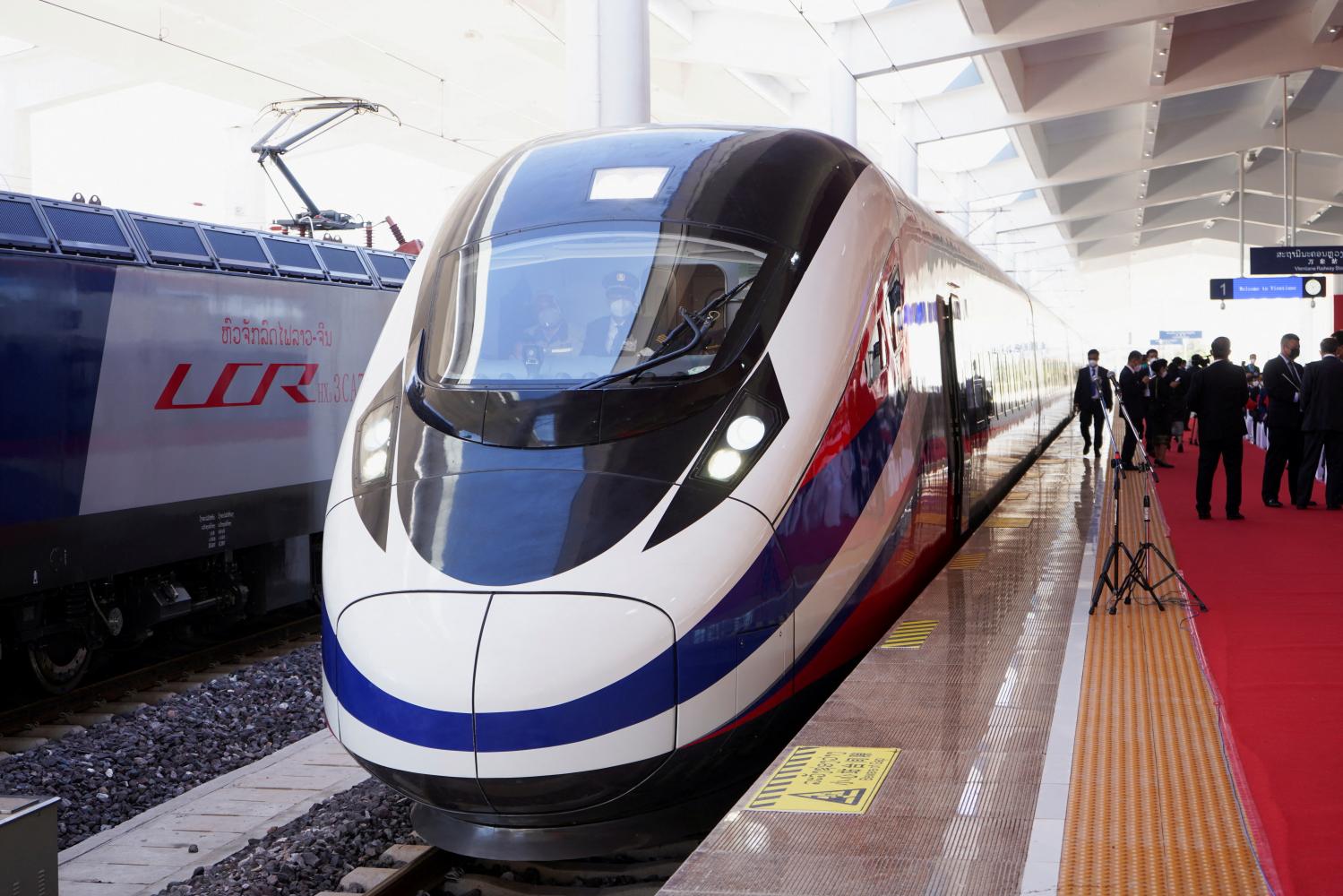
The government should revise its logistics master plan to make the most of the Laos-China railway that started operation on Dec 3, says an expert in Asean studies at Chulalongkorn University.
The Laos-China railway, also known as the Boten-Vientiane railway, is a 414-kilometre standard-gauge electrified railway in Laos, running between the capital Vientiane and the town of Boten on the border with China.
The line's northern end is connected to the Chinese rail system in Mohan, through the Yuxi–Mohan railway. The railway ends at the Vientiane south cargo station. The Boten–Vientiane railway is an integral section of the central line on the Kunming–Singapore railway, and was built as part of China's Belt and Road Initiative.

Piti: Affects whole region
Piti Srisangnam, director of academic affairs at the Asean Studies Centre at Chulalongkorn University, said the railway will affect the region as a whole as it is a door to opportunity in the Great Mekong Sub-Region (GMS) and the Association of Southeast Asian Nations (Asean).
"We don't have to care who builds it or who pays for it. But the correct mindset is we have to see this railway as an opportunity for Asean to access and enlarge the market. This is the better way to reallocate both the start and end of regional value chains," he said.
"Thailand should revise its logistics master plan. Now is the time to reprioritise what is important," Mr Piti said at a webinar recently held by the Capital Market Academy, Chulalongkorn University's Asean Studies Centre and Laos' AIF group under the theme of "Unlocking Business Opportunity in Laos: the GMS Rail Link".
Mr Piti said Thailand is able to connect to China via Laos using two routes. The first one is R3A or the Kunman Gonglu Road that connects Kunming via Luang Namtha and Bo Kaeo in Laos to Chiang Rai province.
"We are currently using this road to transport goods via trucks. And we will get a new railway system connecting the northeastern part of Thailand via Nong Khai to Vientiane. Hence, I think we can use it both ways,'' he said.
Mr Piti said road connectivity in Thailand is good. It may have to connect the Eastern Economic Corridor to the northeastern part of Thailand to the US$5.9 billion Laos-China railway to link to China and other places around the world as China had already built many railways around the world.
He also suggested Thailand prioritise upgrading the first Thai-Lao friendship bridge linking Nong Khai and Vientiane because the bridge is too small with limited capacity to expand.
"It has two lanes with one standard railway. The capacity of the bridge is not enough but the plan to enlarge and build a new bridge next to the old one is too far off in the future. So we have to reprioritise and build this bridge sooner," he said.
Authorities must find a way around differences in the gauge station along the line from Thailand to Laos.
"We have the railways with a standard gauge or the one-metre gauge from Hua Lamphong to Nong Khai, but in Laos, the system will be a standard gauge with 1.45 metres,'' he said.
A multimodal transport hub in Thailand was needed to ease the delivery of goods from container ships to trucks and the railway, he noted.
"And of course, we need to link our special economic zones in Chiang Rai, Nakhon Phanom, Mukdahan and Nong Khai to Laos, and on the Laos side, they have Thanaleng dry port and Vientiane logistic park already," he added.
The two sides including their special economic zones need "seamless connectivity", he said.
Joe Horn-Phathanothai, Strategy 613 company founder and CEO, said the railway has been built at the right time and right place, as Laos was a challenging place geographically to build such infrastructure.
"It was also done on a great budget. Laos has managed to complete what would have been 70% of Thailand's Bangkok-Nong Khai rail link with about 45% of the budget," he said.
Economic corridors could be formed along the railway from Bangkok to Nong Khai and from there to Thanaleng in Vientiane, that connect to the GMS railway.
"Naturally, there will be a cluster that will form along the line and products will be sent to China. I think there will be many economic benefits along the entire route from China right down to Bangkok," Mr Piti said.
China is now more isolated internationally as it faces growing negative sentiment from the West, he said, adding the railway can bolster its economic revival.
"Its 'Nanxiang' policy was in place even before the Covid-19 crisis. This policy aimed to 'look south'. That means much to us in Thailand, Laos or the GMS in general and beyond the GMS to Asean. It is driving a close partnership between the GMS region and China," he added.
People in this region can reap the benefit from the railway via two means: tourism and trade.
While the scenery from Vientiane to Kunming was appealing, it is better suited "slow-life" tourism than business travellers.
As a result, trade is expected to be the main beneficiary. However, Mr Piti said there was no need to wait for the state to build a Bangkok-Nong Khai standard gauge, as containers could be delivered to Vientiane using the existing narrow gauge.
"Obviously, it won't be as smooth as if the same gauge applied all the way to China, but there are many other things we can start improving, such as border crossings, customs, logistics needed for handling a massive amount of container traffic, and better visa connections between three countries," he said.